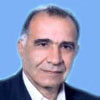Phenol Removal from Aqueous Solution by Adsorption Process: Study of The Nanoparticles Performance Prepared from Alo vera and Mesquite (Prosopis) Leaves
Author(s):
Article Type:
Research/Original Article (دارای رتبه معتبر)
Abstract:
This study was performed to measure the potential utilization of agro-waste to generate nanoparticles and evaluate the capability of its as a low cost adsorbent for removal of phenol. Adsorption studies for phenol removal by using Aloe vera and Mesquite leaves nanoparticles carried out under various experimental conditions including pH, nano-bioadsorbent dosage, phenol concentration, contact time, temperature and ionic strength in a batch reactor. The adsorption kinetics by pseudo-first order and pseudo-second order models and isotherm technique by Freundlich and Langmuir isotherms models were applied. The results showed that the rate of phenol adsorption increases in both nano-bioadsorbents with an increase of pH up to 7, adsorbent dosage up to 0.08 gL-1, phenol initial concentration up to 32 mgL-1, contact time up to 60 min and raising in temperature. The adsorption data followed the Freundlich isotherm model. The kinetic studies indicated that the adsorption of phenol with nano-bioadsorbents was best described by the pseudo second order kinetics. We found that the nanoparticles prepared from Aloe vera and Mesquite leaves had a high capability in adsorption of phenol, beside the point that they could be accessed at a low cost. These agro-wastes can be used to remove phenol from aqueous environments.
Keywords:
Language:
English
Published:
Scientia Iranica, Volume:24 Issue: 6, Nove-Dec 2017
Pages:
3041 to 3052
https://www.magiran.com/p1779436
سامانه نویسندگان
مقالات دیگری از این نویسنده (گان)
-
Spatial Distribution of Lead in the Soil of Urban Areas Under Different Land-Use Types
Amin Allah Pasgar, *
Avicenna Journal of Environmental Health Engineering, Sep 2023 -
Comparing the Efficiency of UV/TiO2 and UV/O3 Processes in Degradation of Sulfonamide Antibiotics in Aquatic Solution
Mahsa Tahergorabi*, , Samaneh Dehghan, Ali Esrafili, Majid Kermani, Mojtaba Yegane Badi
Journal of Mazandaran University of Medical Sciences,


